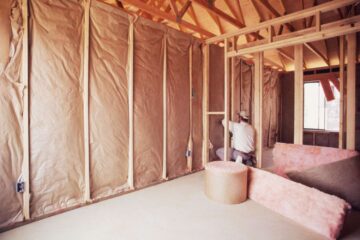In today’s construction industry, where energy conservation and environmental responsibility are top priorities, glass wool insulation has become a go-to material for architects, contractors, and homeowners. This high-performance insulation solution, crafted from recycled glass and silica sand, offers unmatched thermal regulation, superior sound absorption, and outstanding fire resistance. As global building standards evolve toward greener practices, glass wool stands out as a versatile and future-proof option for both residential and commercial applications.
The production of glass wool begins with melting recycled glass at extremely high temperatures before spinning it into fine, interwoven fibers. These fibers form a lightweight yet dense mat that contains millions of tiny air pockets, creating an effective barrier against heat transfer and noise penetration. Unlike other insulation materials that may degrade or settle over time, glass wool maintains its structural integrity for decades, ensuring consistent performance throughout a building’s lifespan.
One of the most significant benefits of glass wool is its exceptional thermal insulation capability. By drastically reducing heat loss in winter and heat gain in summer, it helps maintain stable indoor temperatures with minimal reliance on heating and cooling systems. This translates into substantial energy savings and lower utility costs, making it an economically sound choice for budget-conscious builders and environmentally aware property owners. Furthermore, glass wool’s non-combustible nature enhances building safety, as it does not contribute to fire spread and can withstand temperatures up to 500°C without releasing toxic fumes.
Acoustic comfort is another area where glass wool excels. The material’s unique fibrous structure absorbs and disperses sound waves, making it ideal for use in spaces where noise control is essential. From apartment buildings and hotels to schools and office complexes, glass wool insulation helps create quieter, more productive environments by minimizing external noise pollution and reducing sound transmission between rooms.

Sustainability lies at the core of glass wool’s appeal. With a composition that includes up to 80% recycled content, it supports circular economy principles by repurposing waste glass that would otherwise end up in landfills. The manufacturing process is designed to minimize energy consumption, and the final product is fully recyclable, further reducing its environmental footprint. Additionally, glass wool is free from harmful chemicals such as formaldehyde and CFCs, ensuring healthier indoor air quality compared to some synthetic alternatives.
Installation is quick and hassle-free, thanks to glass wool’s flexibility and adaptability. Available in rolls, batts, or loose-fill forms, it can be easily fitted into walls, roofs, floors, and even around complex structures like pipes and ductwork. Its lightweight nature reduces transportation costs and labor time, while its resistance to moisture and mold growth ensures long-term durability without maintenance concerns.
As the construction industry continues to prioritize energy efficiency and green building certifications like LEED and BREEAM, glass wool insulation remains a trusted ally. Its ability to meet stringent thermal and acoustic requirements while aligning with sustainability goals makes it a preferred choice for forward-thinking projects worldwide. Whether for new builds or retrofits, glass wool delivers a winning combination of performance, safety, and eco-friendliness.
For architects, builders, and homeowners seeking an insulation material that balances cost-effectiveness with environmental stewardship, glass wool presents a compelling solution. Its proven track record, coupled with ongoing innovations in production and application, ensures it will remain a cornerstone of sustainable construction for years to come. By integrating glass wool into building designs, stakeholders not only enhance comfort and efficiency but also contribute to a greener, more sustainable future for generations to come.


